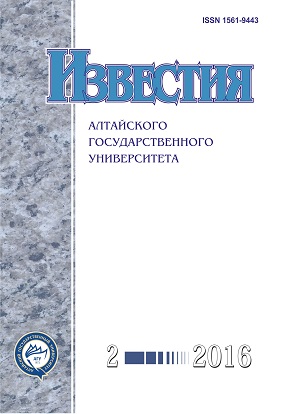The Sources Overview for the Study of the Employment of the Population in the Russian Empire in the Second Half of the 19th Century (Based on Census)
Abstract
The article provides an overview of primary and aggregated materials census of the Russian Empire in the second half of the 19 century, containing information about classes and professions. The article reveals the peculiarities of employment and various aspects of the employment in the census of different levels. The most informative in terms of taking into account the professional activities of the population was urban census. The analysis of statistical data revealed the features of the professional characteristics of the population and certain aspects of employment, and provided a technique used for keeping a record on the professional data. The materials of the first general census of population in 1897 present a special interest in context of employment research. The emphasis is made on the use of aggregated census data to study the question posed. The research of the aggregated data of the 1897 census allowed creating a secondary source — a database to implement new methods of analysis of statistical information. The use of additional statistical sources and the use of new information technologies will in the future conduct a multivariate statistical analysis and typology of employment of the population of the Russian Empire in the second half of 19th-early 20th centuries.
DOI 10.14258/izvasu(2016)2-20
Downloads
Metrics
References
Гозулов А.И. Переписи населения земного шара. - М. 1970.
Швиттау Г.Г. Профессии и занятия населения. Опыт критико-методологического исследования в области экономической статистики. - СПб., 1909.
Пландовский В.В. Народная перепись. - СПб., 1898.
Положение о первой всеобщей переписи населения Российской империи 1897 г. // Полное собрание законов Российской империи. Изд. 3-е. 1895. - Т. 15. - № 11803.
Кадомцев Б.П. Профессиональный и социальный состав населения Европейской России по данным переписи 1897 года: Критико-статистический этюд. - СПб., 1909.
Воблый К.Г Статистика (пособие к лекциям). - Киев, 1909.
Брюханова Е.А., Неженцева Н.В. Перепись 1897 г. как источник изучения занятости населения России конца XIX - начала XX вв. // Сибирские архивы в научном и информационном пространстве современного общества : Материалы межрегион. науч.-практ. конф. (Новосибирск, 11 марта 2015 г). - Новосибирск, 2015.
Информационная система «Профессии и занятия населения Российской империи конца XIX - начала XX вв.» [Электронный ресурс]. - URL: http://hcod.asu.ru/.
Брюханова Е.А., Владимиров В.Н., Иванов Д.Н., Чекрыжова О.И. Информационная интернет-система «Профессии и занятия населения Российской империи конца XIX - начала XX в.» как источник для профессиоведческих исследований // Историческая информатика. 2014. - № 1.
Leeuwen M.H.D. van, Maas I., Miles A. HISCO. Historical International Standard Classification of Occupations. Leuven Univ. Press, 2002.
Izvestiya of Altai State University is a golden publisher, as we allow self-archiving, but most importantly we are fully transparent about your rights.
Authors may present and discuss their findings ahead of publication: at biological or scientific conferences, on preprint servers, in public databases, and in blogs, wikis, tweets, and other informal communication channels.
Izvestiya of Altai State University allows authors to deposit manuscripts (currently under review or those for intended submission to Izvestiya of Altai State University) in non-commercial, pre-print servers such as ArXiv.
Authors who publish with this journal agree to the following terms:
- Authors retain copyright and grant the journal right of first publication with the work simultaneously licensed under a Creative Commons Attribution License (CC BY 4.0) that allows others to share the work with an acknowledgement of the work's authorship and initial publication in this journal.
- Authors are able to enter into separate, additional contractual arrangements for the non-exclusive distribution of the journal's published version of the work (e.g., post it to an institutional repository or publish it in a book), with an acknowledgement of its initial publication in this journal.
- Authors are permitted and encouraged to post their work online (e.g., in institutional repositories or on their website) prior to and during the submission process, as it can lead to productive exchanges, as well as earlier and greater citation of published work (See The Effect of Open Access).








